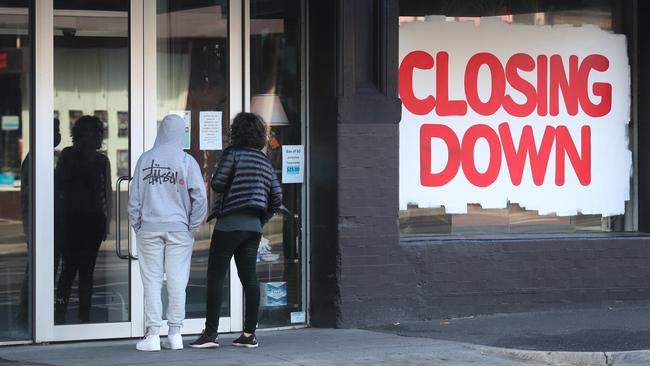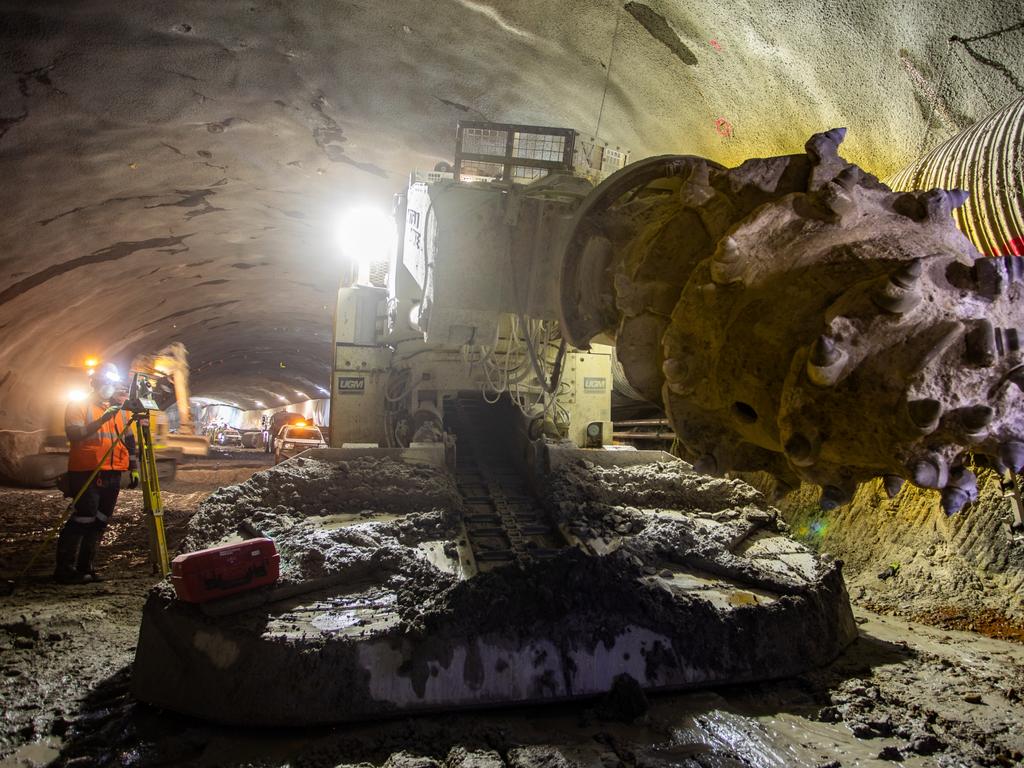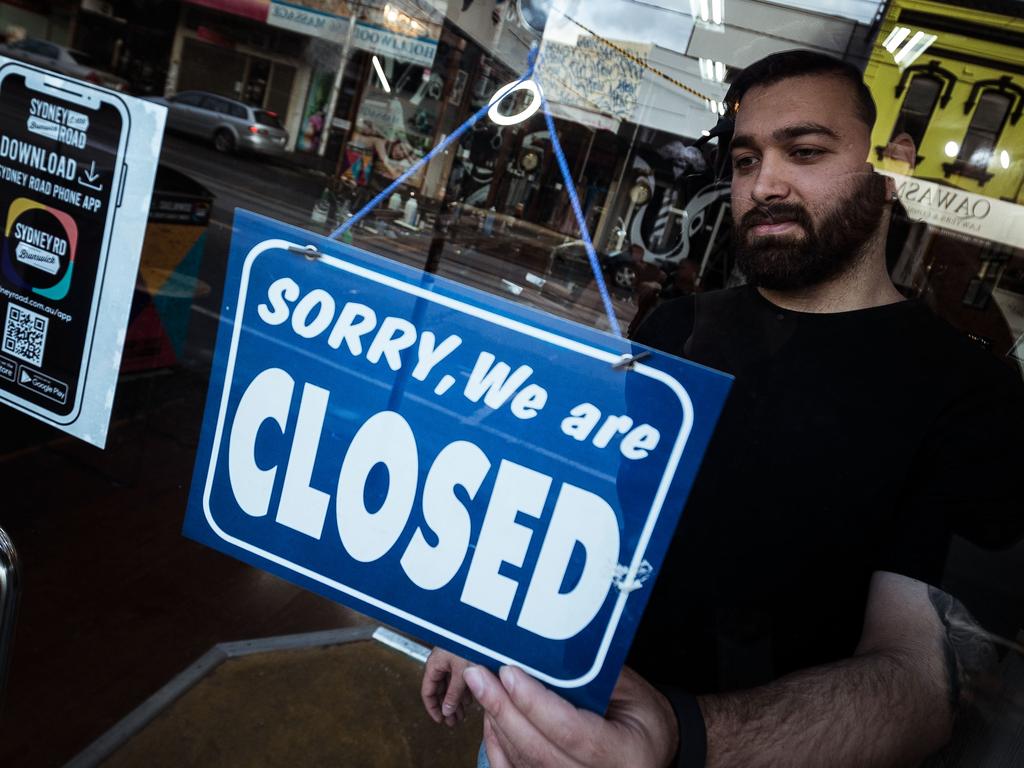Australia’s looming default cliff

Usually recessions start with a credit squeeze then turn into a decline in activity and employment as businesses respond to higher interest rates and falling demand by cutting production and staffing and, in many cases, by going broke.
This one has worked the other way around: the reduction in demand and production was government-imposed and came first. Loan defaults and bankruptcies were wisely postponed by loan repayment deferrals, income support and temporary suspension of the prohibition on trading while insolvent.
All of those things have an arbitrary end point, starting next month.
As things stand the temporary lifting of the ban on trading while insolvent is due to end on September 27 and loan repayment deferrals were due to end at the same time but have been extended… up to a point.
Last month’s statement on the matter from the Australian Banking Association said “customers who can restart paying their loans will be required to do so”, but those “with reduced incomes and ongoing financial difficulty due to COVID-19 will be contacted as they approach the end of their deferral period, to ensure that wherever possible they can return to repayments through a restructure or variation to their loan”.
How the banks decide who to contact, and how they’ll decide whether repayments can restart isn’t clear. If an impecunious customer gets the nod, it’s an extra four months, but “it will be provided to those who genuinely need some extra time.”
So even assuming the banks do contact all the right people, and then err on the side of leniency, reminder notices will start going out in February and loans will be 90 days past due in May.
They seem to have stopped publishing detailed information about how many people are deferring repayments and how big their loans are, beyond saying it’s more than 800,000. The average mortgage is about $467,000, which suggests $373 billion worth of loans are on suspension.
The JobSeeker coronavirus supplement goes to 1.6 million people and will be cut from $550 per fortnight to $250 on September 24 and then to zero on December 31. That is, unemployed people on the dole are set to go back to living on $40 a day from January 1.
On September 28, the JobKeeper payment will be cut from $1500 per fortnight to $1200, cut again to $1000 on January 4 and then to zero on March 28. Figures from the Treasury show that 728,640 organisations have enrolled for the JobKeeper scheme, covering around 4.7 million employees, or 35 per cent of the workforce.
Meanwhile, the temporary amendment to the Corporations Act allowing directors to trade while insolvent and ignore letters of demand ends the day before the first JobKeeper cut. There has been no word from the government about extending it.

The most important thing now for the state of the banking system is that those making decisions have very good, very specific data, and that they pay attention to them. They should not be vague survey data from the ABS and definitely not guesses based on what the banks and the government would like to think was happening.
Here are some questions they need to answer:
How many of the people receiving the JobSeeker supplement have a mortgage and are using that money make repayments?
How many of them are on deferred repayments? How many of them will qualify for an extension?
How many of the 828,640 businesses receiving JobKeeper are also on loan repayment deferral?
How many of them are in the tourism, hospitality or entertainment sectors and are therefore likely to see revenue stay down well beyond the end of JobKeeper?
How many of the 4.7 million staff being paid the $1500 per fortnight JobKeeper allowance are making mortgage repayments?
How many are on zero hours?
How many are on deferred repayments, and how many of them will get an extension?
How many businesses would have appointed voluntary administrators if the Corporations Act had not been amended in March to allow trading while insolvent for six months?
The usual number is about 800-900 insolvencies per month. A leading practitioner told me last week that work had fallen 70 per cent because of that amendment, which means that if these were normal times about 600 firms a month have been avoiding insolvency. But of course, these are not normal times.
For a start 728,640 have suffered a decline in revenue of 30 per cent or more to qualify for JobKeeper. How many of those and their 4.7 million staff will be able to service their debts when the payment is cut to $1200 next month, and how many when it goes to zero in March?
Last week the Reserve Bank of Australia published a research discussion paper titled: “How risky is Australian household debt?”. It concluded that the banking system is resilient and that “the consequences of household indebtedness seem more likely to manifest through weaker economic growth than large bank losses”.
Good news! Except the pandemic was barely mentioned, and the paper was anything but an examination of the consequences for the banking system of removing, as planned, income support, repayment deferrals and the safe harbour from trading while insolvent.
If the government, the RBA, APRA and the banks have not already got a joint team of data scientists locked in a room somewhere investigating that now, before those things actually happen, the question is: what the hell are they doing?
Alan Kohler is Editor in Chief of Eureka Report






The key thing now, apart from getting Victoria back on its feet, is to ensure the pandemic doesn’t turn into a financial crisis. This should be consuming every waking moment of the national leadership: it should not only be all-consuming, but bipartisan.